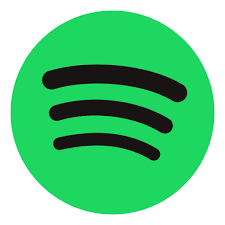

Digital technology has allowed for cheaper production of music, easier routes to fans via social media, and the ability to listen to almost anyone’s music from across the world. In my mod at any point in the day there are musicians from every continent on our speakers, and with this appreciation for these countries’ music comes an interest in how the people of that culture eat, play, and live. The software to produce music at a very high level is pre-downloaded on every Mac, and through social media channels, artists are able to communicate with their fans in ways that were impossible just a decade ago. Record companies are slowly dying but who cares, they have been profiting off the back of hungry artists for years. So why such a negative title to this blog you may ask? Because 99 percent of musicians (who do not teach music) are not able to make livable salaries in 2021. I know it is hard to believe that musicians are making so little especially when you see those at the top, iced out in hundreds thousand dollar watches and chains dancing around McLarens and Ferraris, but most musicians are hungry artists.
How much is the average musician making?
The living wage in the United States as of 2021 was 68,808 dollars per year in 2019 according to research done at MIT. Surveys done in 2014 through the Artist Revenue Streams project found that the average full time musician was making 34,455 dollars a year most of which coming from live gigs (42,379.65 dollars a year adjusted for inflation). This means that the average artist is making just over 60 percent of what is necessary to live a happy, healthy life in the US.

When these few artists make it, they tend to make it big. We all see these popular artists make millions a year but how?
The key to making a lot of money in the music industry comes down to a great deal of skill and a whole lotta luck. Once an artist gains a large following, the algorithms of music streaming services continue the serendipitous cycle of showing new people this music that everyone else is such a fan of. This phenomenon is mirrored on social media, and the greater the popularity of a musical act the greater profit they can reach through live shows and merchandising. The average artist in 2019 made 30.4 percent of their yearly income off of live shows, and 16 percent off of merchandising opportunities. As artists become more and more popular, the greater percentage of their income comes from such live shows. These two revenue streams of merchandise and live shows accounted for about 96 percent of U2’s earnings in 2017.

Why can’t these artists make money off freemium or prescription streaming?
The question of what makes an artist successful is up for debate, but the revenue streams that make artists rich are clear and evident. Artists make next to nothing off of streaming. Spotify pays their artists on average .0032 dollars per listen (1/3 of a cent), Apple Music pays their artists an average rate of $0.0056 dollars per listen, and Google Play Music gives their artists an average rate of $0.0055 payout rate. Only 0.2-0.3% of artists on Spotify have over 256,000 listens a month on Spotify. This means that 99.7 percent of artists on Spotify make far less than 819.2 dollars a month off Spotify. Famous artists deal with the same issues of low royalties on streaming services, but while making millions off of their other pursuits someone like Taylor Swift is not as worried about their streaming income. The Issue is artists today see streaming services as their only way to get known. They give their music to streaming services for nothing in return, and since there is such a depth of artists on the service (over 8 million), they have no negotiation power.
How can unknown musicians make a living off of music?
Many musicians teach music on the side, for supplemental income. The average music lesson costs the consumer fifty five dollars. By giving 12 lessons a week at 55 dollars, an artist can make a supplemental income of 34,320 dollars a year. This in addition to their average salary of 34,455 dollars, would allow these musicians a living wage in which they could actually thrive. There is also a great deal to be made in composing music for video games, movies, and other media. Musicians are also utilizing more profitable forms of social media to share their work. Platforms such as Patreon, YouTube, Twitch, TikTok, and even OnlyFans have become the main outlet for many artists who are tired of being bullied by streaming services. There are definitely ways to make it as an artist in this industry, but the musician needs to be focused on the correct revenue streams or they will fail to put food on the table.
Sources
https://www.radiox.co.uk/features/the-most-unusual-album-releases-of-all-time/#:~:text=The%20band’s%20publishers%20admitted%20that,the%20number%20of%20free%20downloads.
https://soundcharts.com/blog/music-streaming-rates-payouts#:~:text=Spotify%20paid%20the%20artists%20%240,average%20rate%20of%20%240%2C0056
https://www.businessinsider.com/taylor-swift-net-worth-singer-millionaire-makes-spends-money-wealth-2019-4
https://www.businessinsider.com/how-do-musicians-make-money-2018-10
https://www.mthree.com/media/how-technology-has-changed-music/
https://www.rollingstone.com/pro/features/how-musicians-make-money-or-dont-at-all-in-2018-706745/